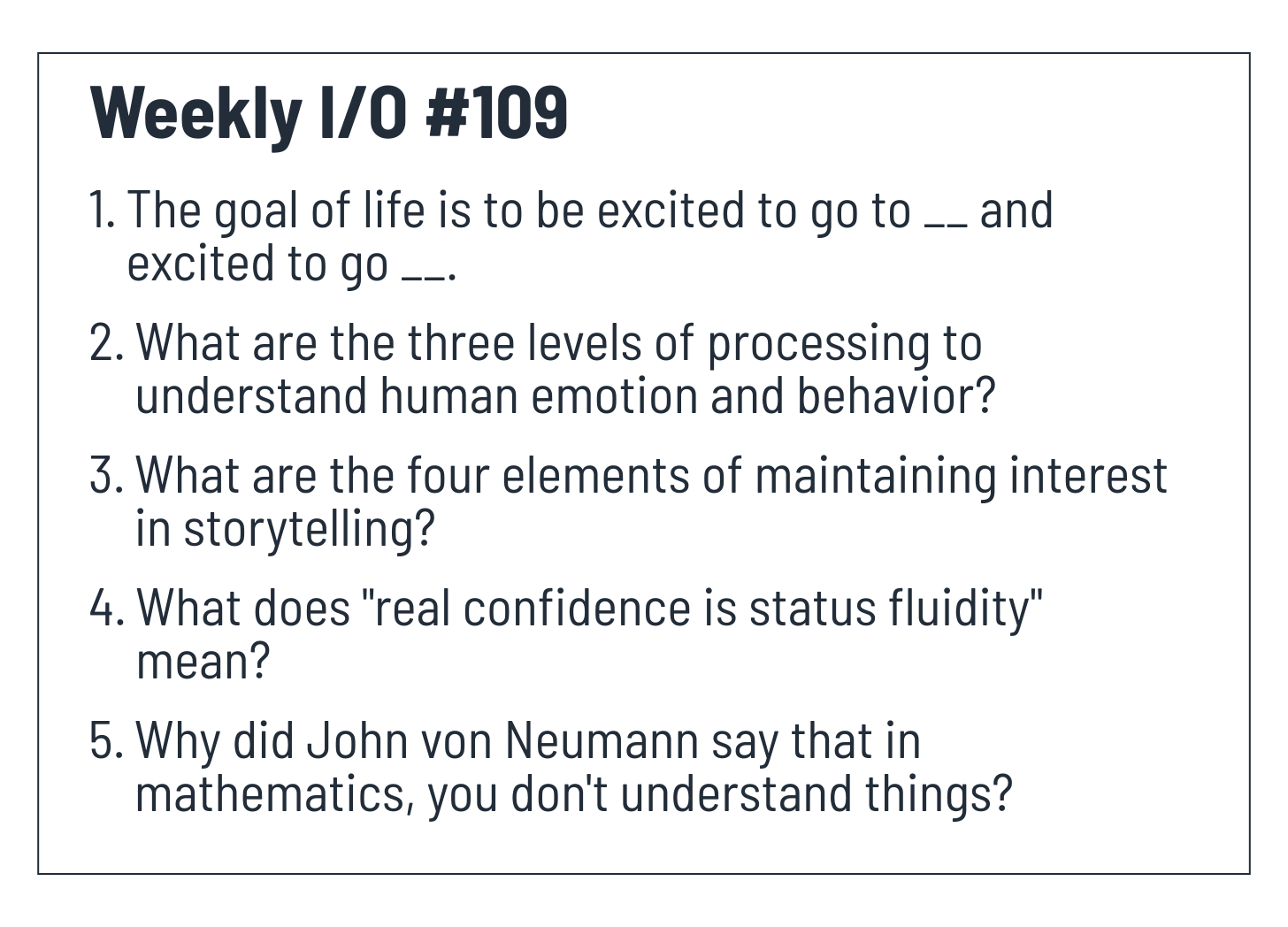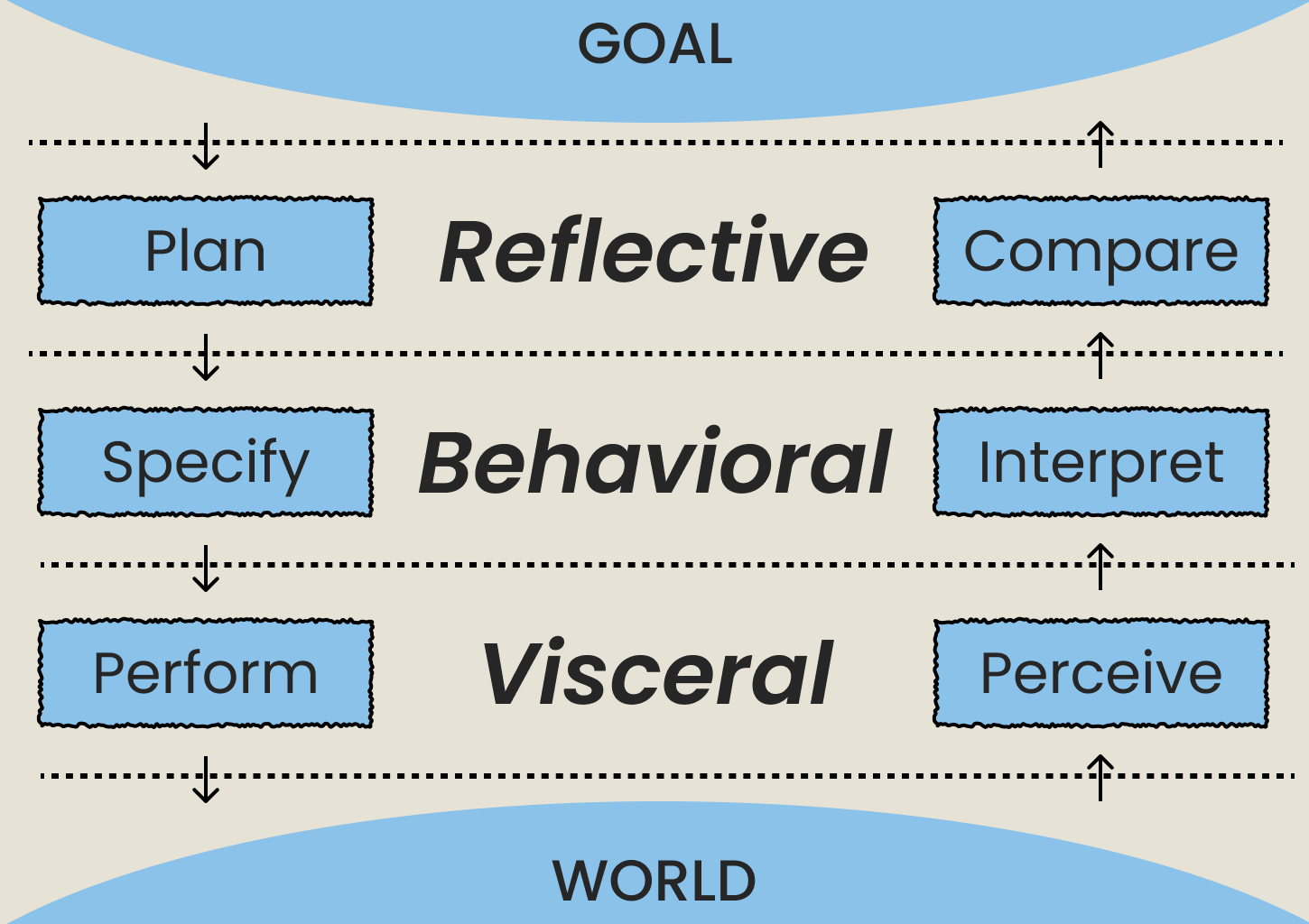The goal of life, How to understand emotion, Four elements of storytelling
Weekly I/O #109: Excited about Work and Home, Three Processing Levels of Emotion and Behavior, Four Elements of Storytelling, Confidence is Status Fluidity, Get Used to Don't Understand
This week's edition of the newsletter is exclusive to paid subscribers. If you'd like full access to this post and over 100 more past Weekly I/O posts, please consider upgrading.
If you enjoy reading Weekly I/O, please share it with others who might also like it. You'll have a chance to win a free paid subscription for one, three, or six months.
Hey friends,
It's been a busy week, so this week's digest is a bit shorter. Hope you enjoy it!
Here's a list of things I enjoyed learning this week:
Patrick Collison on programming languages, AI, and Stripe's biggest engineering decisions
Cognition CEO Scott Wu on Acquiring Windsurf: The Process, The Deal, The Rationale
The State of American Science Funding (For the Next Five Minutes)—Asterisk
Demis Hassabis: Future of AI, Simulating Reality, Physics and Video Games
Surge CEO & Co-Founder, Edwin Chen: Scaling to $1BN+ in Revenue with NO Funding
Input
Here's a list of what I learned this week.
1. The goal of life is to be excited to go to work and excited to go home.
Article: Tweet
I love this simple yet beautifully rephrased "Love and work, work and love, that's all there is" from Sigmund Freud.
2. Human emotions and behavior can be understood by examining three processing levels: visceral (instinctive reaction), behavioral (learned responses), and reflective (conscious thinking and memory).
Book: The Design of Everyday Things
In Emotional Design, cognitive scientist and usability engineer Donald Norman proposed three distinct layers of how your brain processes emotions and decisions: visceral, behavioral, and reflective.
The visceral level is your brain's instant reaction. For example, when hearing fingernails scratching a chalkboard, your immediate cringe is visceral. It's automatic and subconscious, designed to protect you by quickly classifying things as good or bad, safe or unsafe.
Designers oftentimes take care of users' visceral level of processing by crafting appealing aesthetics or pleasant sensations, so that they can draw you toward their products without requiring any conscious thought.
The next level is the behavioral level, where your actions are guided by learned skills and expectations. For instance, pressing an elevator button and expecting it to light up.
When reality matches your expectations, you feel satisfied. This level shapes your everyday interactions, from driving your car to navigating a smartphone interface.
Finally, the reflective level involves conscious thought and deep understanding. This is where you reflect on past experiences, assigning meaning, blame, or pride to them.
Suppose you initially struggled with a beautiful, sleek smartphone, but once you mastered it, you reflect positively, even proudly recommending it to friends. Memory and emotions at this level last the longest and have a strong influence on your decisions, often overriding momentary frustrations from the behavioral level.
Thinking of design in three levels helps us understand why, sometimes, beauty overshadows flaws in a product. An attractive visceral appeal, combined with positive reflective memories, can still leave users happily loyal even when the usability is suboptimal.
You can also combine this with the Seven Stages of the Action Cycle. "Plan and Compare" is at the reflective level, "Specify and Interpret" is at the behavioral level, and "Perform and Perceive" is at the visceral level.
3. The four essential elements for sustaining interest in storytelling: stakes, suspense, surprise, and humor.
Book: Storyworthy
American novelist Matthew Dicks believes that you should assume no one wants to hear anything you want to say unless you give them a reason to listen. It's the writer's responsibility to intrigue their readers and provide that reason.
He breaks down four key elements for maintaining interest in storytelling for the readers: Stakes, Suspense, Surprise, and Humor.
Keep reading with a 7-day free trial
Subscribe to Weekly I/O to keep reading this post and get 7 days of free access to the full post archives.




